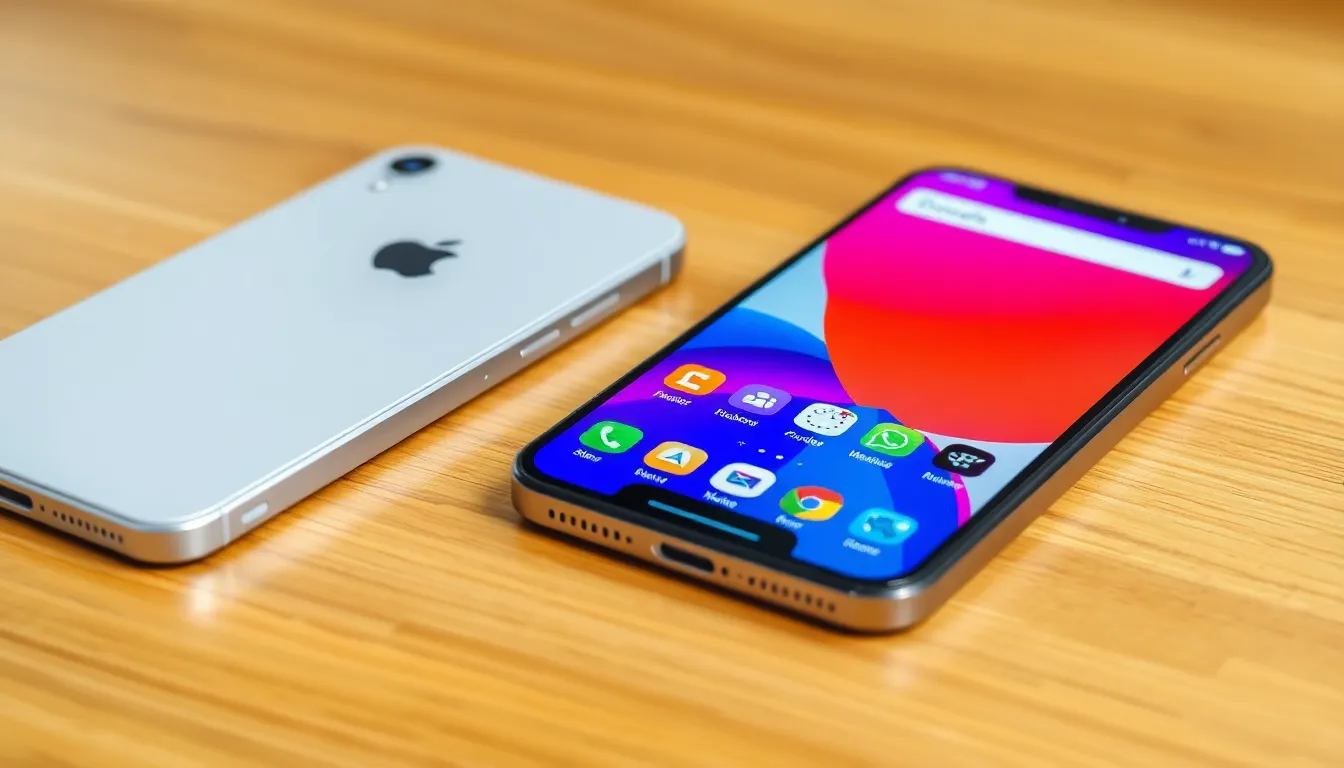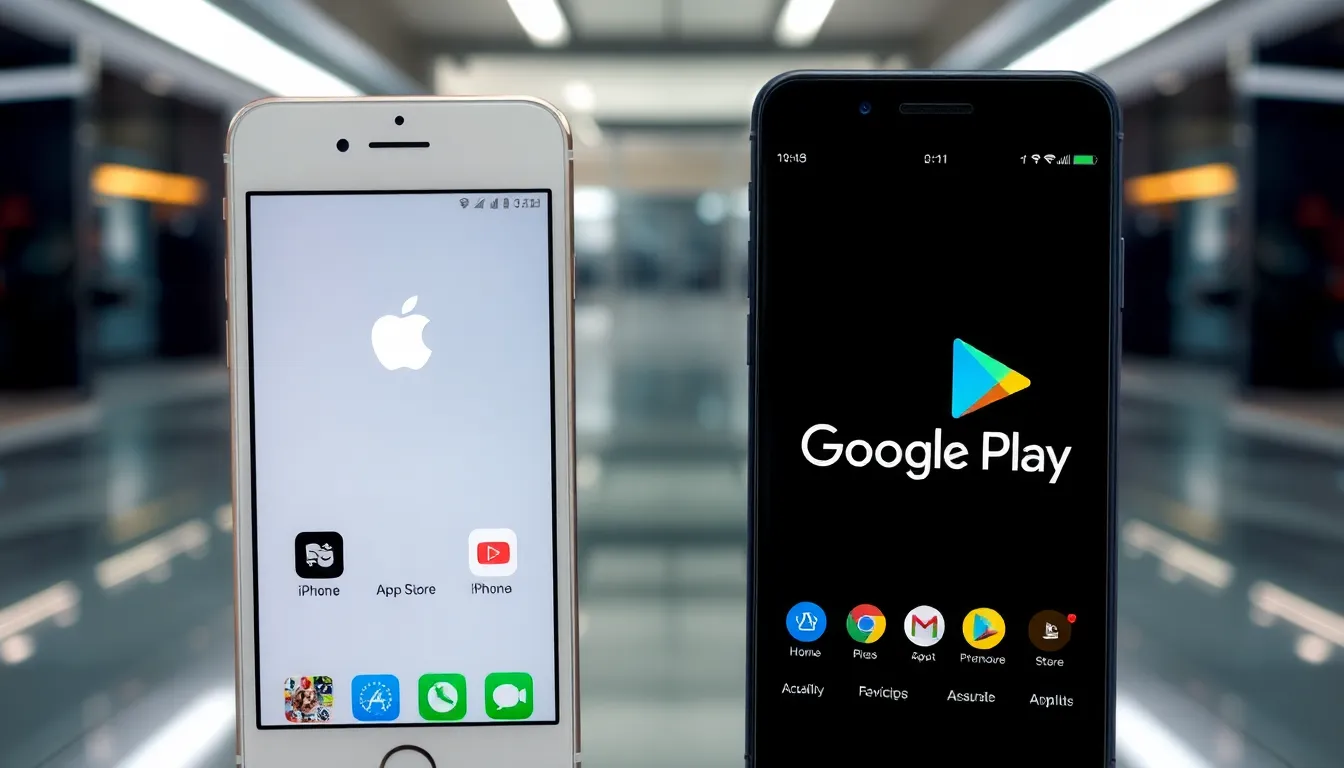In a world where smartphones reign supreme, the battle between Android and iPhone users rages on. It’s like trying to mix oil and water—one’s all about customization while the other thrives on simplicity. But what happens when an iPhone user spots a shiny Android app that promises to revolutionize their life? Can they really download Android apps on their beloved iPhone?
Table of Contents
ToggleUnderstanding Android Apps on iPhone
Downloading Android apps directly onto an iPhone isn’t possible. iOS, the operating system for iPhones, uses a different app architecture than Android. Each platform hosts applications in their respective app stores – the Google Play Store for Android and the Apple App Store for iOS.
Alternative methods exist for accessing similar functionality. Many popular Android apps offer equivalent versions on iOS. Developers often release their apps on both platforms to maximize reach. An iPhone user can search the App Store for an app by its name, ensuring compatibility with their device.
Some specific apps provide web-based versions. Using a mobile browser, an iPhone user can access these web apps. Instant access via a web browser doesn’t require downloading or installation.
Emulating Android environments is another approach. Applications like emulators can replicate Android functionality on other systems, but such options can’t run directly on iOS. Users must resort to a computer for an emulation experience.
Exploring cross-platform applications becomes critical. Apps like WhatsApp and Spotify operate seamlessly across both operating systems. Investigating the app’s availability on the desired platform helps ensure a smooth transition.
Understanding compatibility can enhance user experience. Research confirms that many developers optimize their applications for both operating systems. Therefore, seeking similar apps on iOS often results in finding effective alternatives.
Compatibility Issues

Compatibility issues arise when considering downloading Android apps on an iPhone. Fundamental differences between iOS and Android lead to significant barriers.
Differences Between Operating Systems
Operating systems dictate app functionality and compatibility. Android benefits from a more open ecosystem, allowing users to install apps from various sources. In contrast, iOS enforces strict guidelines, limiting app installations to the Apple App Store. As a result, many apps designed for Android simply don’t run on Apple’s platform. Some developers might create parallel versions for both environments, but not every Android app receives this treatment. Identifying cross-platform apps bridges some of these gaps.
File Formats and App Structure
File formats largely influence app compatibility between platforms. Android apps utilize APK files, which are exclusive to its system architecture. iPhone apps, however, rely on IPA files that are specifically tailored for iOS. This distinction creates a technical barrier for directly downloading Android apps on an iPhone. Moreover, different app structures mean that even if an Android app could be converted, performance issues might arise. Understanding these file formats highlights the challenges faced by users wanting to access Android applications on iOS devices.
Methods to Access Android Apps on iPhone
Accessing Android apps on an iPhone requires alternative methods, given the limitations between the two operating systems.
Web-Based Alternatives
Many Android apps offer web-based versions that users can access through their mobile browsers. These versions maintain similar functionalities to their app counterparts. Some popular services, like WhatsApp and Spotify, provide full web functionality, enabling users to interact with their features without downloading an app. Utilizing browser-based access eliminates compatibility issues and allows for easy use on an iPhone. Users can simply search for the official website of the desired app and navigate through the browser for quick access.
Using Emulators and Third-Party Tools
Emulators and third-party tools present another method for accessing Android apps, although these typically require a computer. Options like Bluestacks enable users to create an Android environment on their PCs or Macs. Once set up, this environment allows users to install and use Android apps directly from the Google Play Store. Keep in mind that running such emulators on an iPhone isn’t feasible, but they offer a solution for iPhone users who also own a computer. These methods cater to those who seek specific Android functionalities unavailable on iOS.
Limitations and Risks
iPhone users face several limitations and risks when attempting to access Android apps. Understanding these challenges is crucial for navigating the app landscape effectively.
Security Concerns
Downloading Android apps on an iPhone is inherently risky due to security vulnerabilities. Android applications often come from unverified sources, exposing users to malware. Although iOS limits app installations to its official App Store, sideloading apps, if attempted, can compromise device security. Data privacy issues may arise, especially if apps request unnecessary permissions. iPhone users should prioritize their digital safety and remain cautious about any Android app they wish to use.
Performance Issues
Performance concerns also emerge when considering Android apps for iPhone. Emulators or third-party tools may not integrate well with iOS, leading to lag or crashes. These applications often require extensive resources, impacting overall device functionality. Many Android apps optimize for specific hardware and could lead to poor experiences on different devices. Compatibility problems can affect user satisfaction, making it essential to choose apps designed specifically for iOS.
While iPhone users can’t directly download Android apps due to fundamental differences between the two operating systems they still have options to enhance their app experience. Many popular apps are available on both platforms and can be easily found in the Apple App Store. Additionally web-based versions of certain applications allow users to access similar functionalities without downloading anything.
It’s crucial for iPhone users to prioritize digital safety by sticking to apps designed for iOS. Exploring cross-platform applications can also provide seamless experiences across devices. By understanding compatibility and available alternatives users can enjoy a rich app experience while navigating the limitations of their devices.





